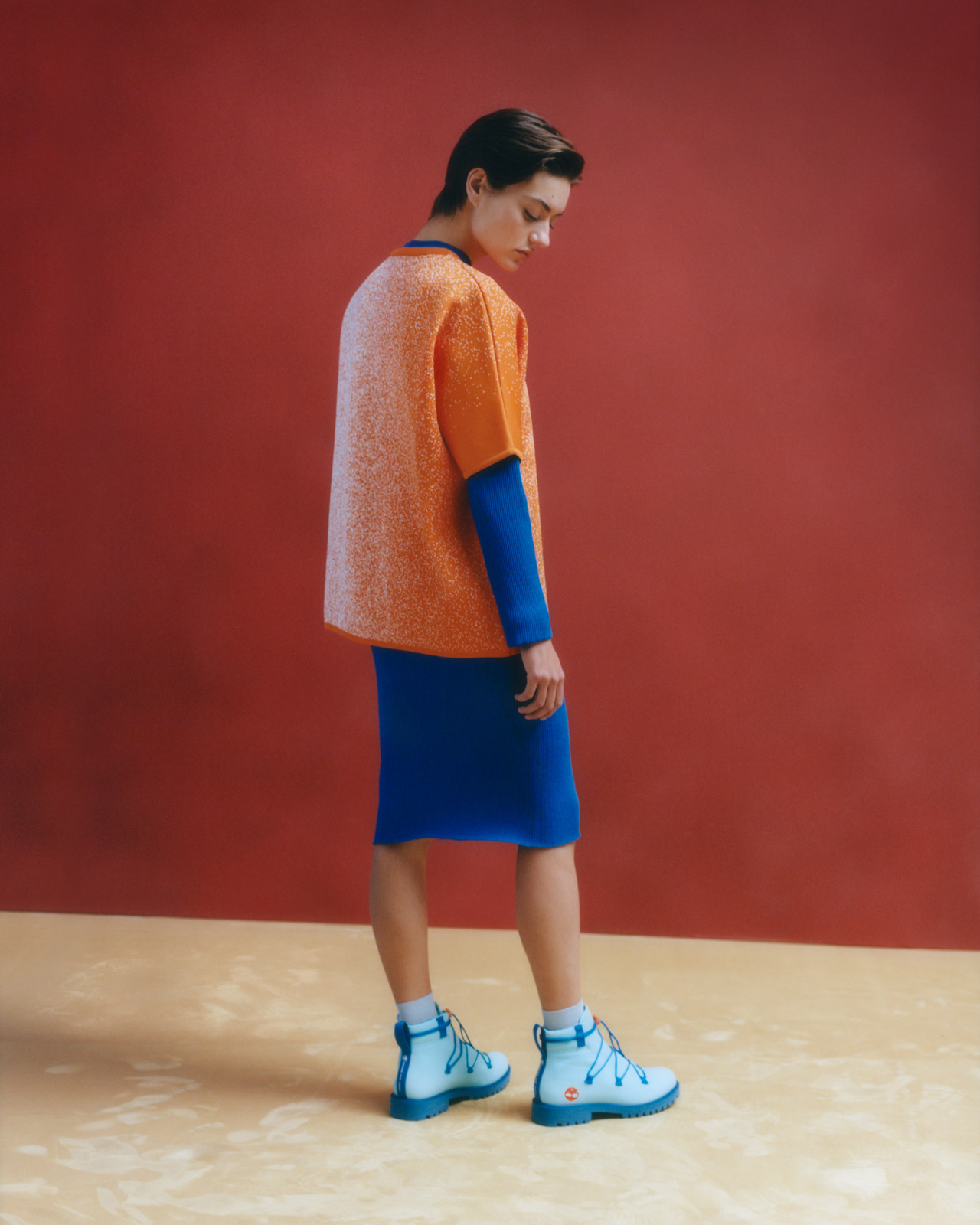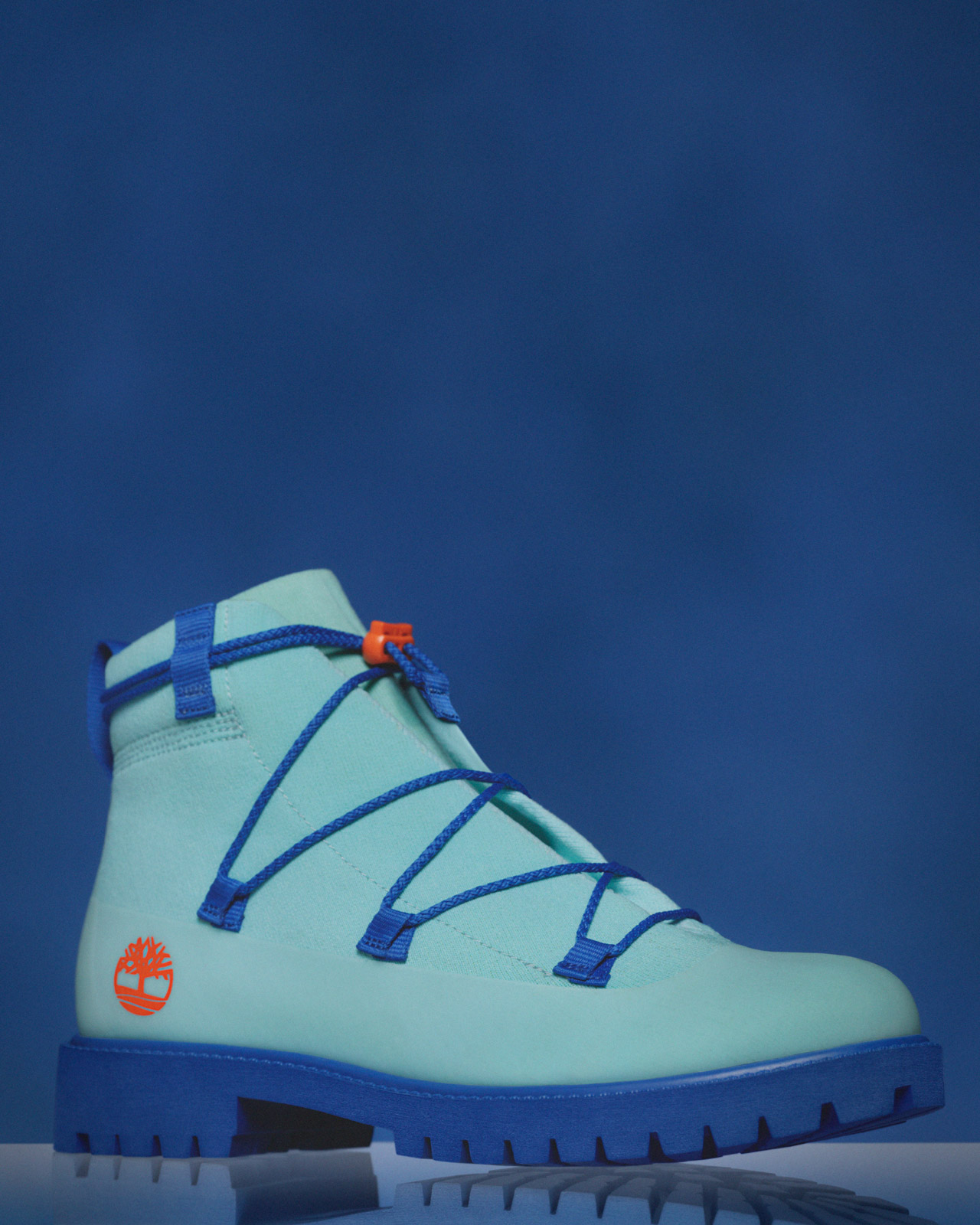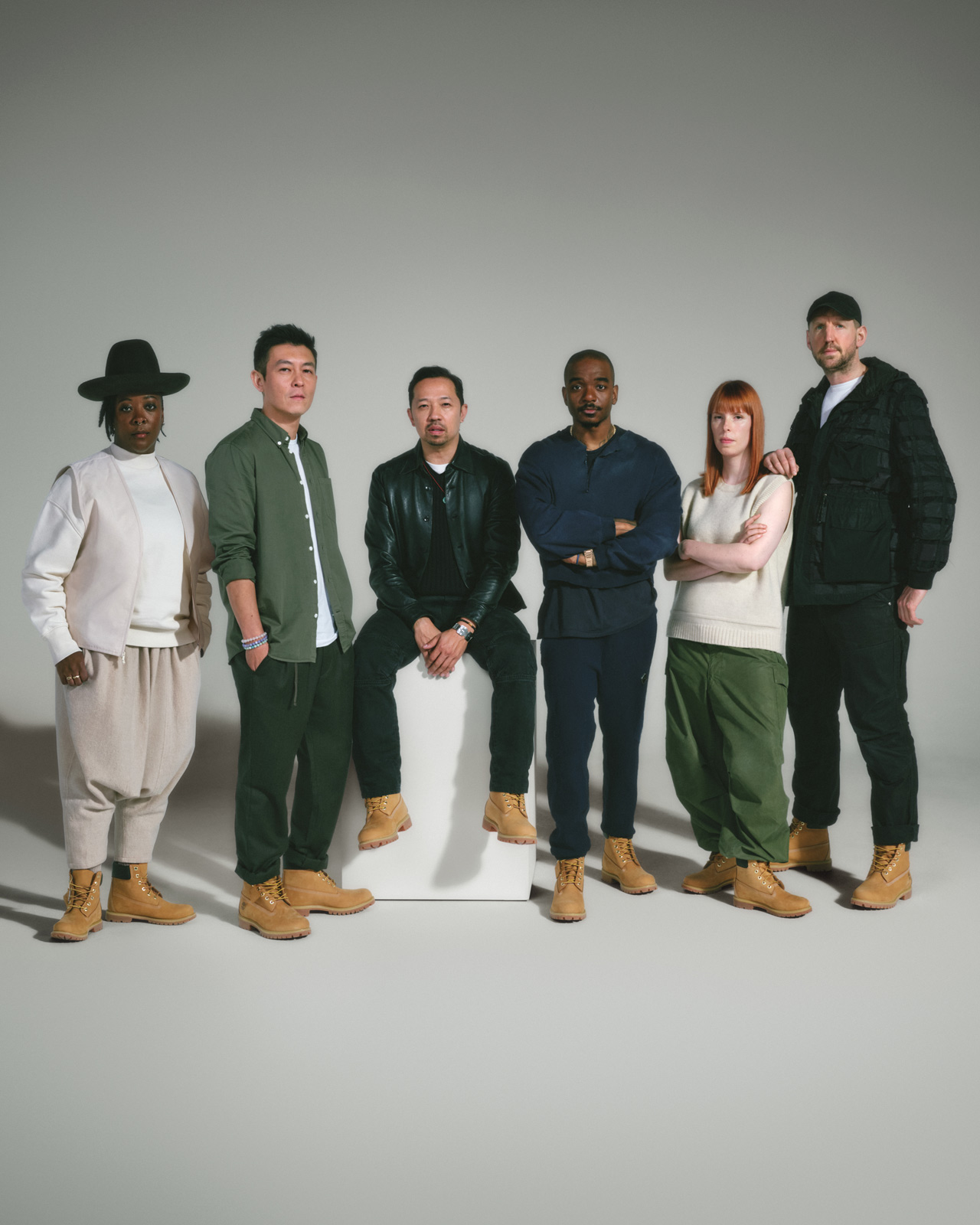From Samuel Ross to Edison Chen, a collective of creatives form their take on the mainstay shoe, and join Document to expound on their designs
In 1973, the Abington Shoe Company introduced a weatherproof boot in Newmarket, New Hampshire. Made with injection-molding waterproof technology, it was created to withstand the tough New England climate. They named it the Timberland, and ensured its durability, ideal for working outdoors in a moist environment. It became known for its ability to protect—a reliable and innovative choice that was also aesthetically pleasing. The Timberland boot defined the company so much so that it was renamed Timberland in 1978.
The Timberland Premium 6-Inch Boot wasn’t limited to a favored option for blue-collar workers; its durability, simplicity, and wheat colorway made it the boot of choice for subcultures in both Europe and the US. In the ’80s, Italy’s Paninaro scene—named for the youth who frequented the Al Panino bar in Milan—adopted the boot as part of its designer uniform, which also consisted of Ray-Ban sunglasses and Moncler coats. Ravers in the UK incorporated the boot into their emerging movement’s look in the early-’90s. Concurrently stateside, the hip-hop crowd embraced the shoe. The Notorious B.I.G. regularly referenced it in his lyrics, like in his 1997 hit “Hypnotized,” in which he rapped, “Timbs for my hooligans in Brooklyn.” The late Aaliyah also wore the reliable yellow boot regularly throughout her short career, and The Wu-Tang Clan were often photographed in them.
To mark the 50th anniversary of the Timberland Premium 6-Inch Boot, the New Hampshire-based brand introduced Future73, a collective of designers and creatives from around the world: Canadian-born, California-based Hong Kong actor and founder of streetwear label CLOT Edison Chen; British designer and A-COLD-WALL* founder Samuel Ross; Netherlands-based knitwear designer and Knit in Motion founder Suzanne Oude Hengel; Chicago-born, New York-based contemporary artist Nina Chanel Abney; Los Angeles-based creative director and Opening Ceremony founder Humberto Leon; and British designer and former Timberland global creative director Christopher Raeburn. Each talent was charged with creating a capsule collection reimagining the iconic boot, in order to move it into its next 50 years of existence. The results will be rolled out in a series of capsule collection drops over the year.
Document spoke to Future73 members about their first experiences with Timberland, reinventing the yellow boot, and how it’s become a cultural mainstay over the last half decade.
Samuel Ross
Ross elevated Timberland, putting an emphasis on quality and craftsmanship. The designer made his collection in Italy, using the highest quality producers in the business. The result is a luxurious yet minimal reimagination of the boot, made with a fine leather that will develop a unique patina over time.
On the starting point for his collection:
“Craft—that’s one of the key focal points that comes to mind. I think this notion of tension, durability, and sustenance were underpinning topics. If you think about A-COLD-WALL*, it tries to tackle similar topics: endurance and of recontextualizing modern masculinity—which, of course, is so deeply tied to Timberland.”
On why the Timberland 6-Inch Boot is a cultural icon:
“The practicality of it, the durability of it. [It has] power, aggression, strength. Then it’s professional, like a workman’s shoe. [It] was really integrated into Black American culture. All of those elements come in. When you put the shoe on—the elevation and height—all of these elements are perks. This is a good product, a really good product.”
Humberto Leon
For his Timberland Future73 collection, Leon wanted to go seasonless. He used the industrial boot as the muse for his creations, exaggerating the eyelets, laces, and sole, and using the lacing as an accent on a knitted ensemble. Leon’s pieces are meant to be worn year-round.
On his first pair of Timberlands:
“As a kid, I really loved Timberland. I remember the first time I tried a pair on; it was because my sister’s boyfriend was a construction worker. He had his Timbs around the house, and I would always slip them on and look in the mirror. I would wear my baggy denim shorts with thick white socks and a v-neck white t-shirt. I never could afford a pair. One day, for my birthday, he bought me Timberlands. It really made me feel like I was a part of this club. This shoe was functional for him, but for me, it was for style.”
On why the Timberland 6-Inch Boot is a cultural icon:
“You can’t design an icon. I think culture has to create the icon—the influence of rap, and whether supermodels are wearing it. I feel like culture has to be embedded in a product in order to make it live longer than the product itself.”
On designing his capsule collection:
“I wanted to pay homage to the original 6-Inch Boot, while still pushing it into the future. So in my mind, this is a futuristic version of it. I was the only designer that was able to create a sole from scratch. I think I was the first to ask.”
“You can’t design an icon. I think culture has to create the icon.”
Nina Chanel Abney
Abney first discovered Timberland during hip-hop’s golden era. The artists incorporated her signature geometric figuration into patterns for a vest, and graphics for a vintage-inspired cardigan.
On discovering Timberland:
“I first entered into the brand via hip-hop—’90s, 2000s fashion. Later in my life, I ended up in an industrial job where I actually was wearing a boot for function. I’m interested in where aesthetics meet function.”
On Timberland’s cultural significance:
“In the ’90s and 2000s, [they had] such an impact on fashion—even thinking about Nautica and Polo, that whole time of [taking] clothing out of its intended purpose, and pushing it more [into] streetwear, lifestyle.”
On the hip-hop artists wearing Timberland:
“I feel like every New York rapper, but Nas would be a standout for me. Wearing a yellow boot with the denim suit was a very popular look.”
On the starting point for her collection:
“Into the pandemic and quarantine, I found myself outside more. I’m not an outdoorsy person. I’m more like, Oh, it’s bugs. And so I’m like, Well, how can I speak to that same person who’s hiking for the selfies, maybe an hour tops? That was the starting point for my apparel. My personal wardrobe is usually pretty minimal, and [concerned with] the key staples of a wardrobe that always retain relevance. So that was my starting point for the silhouettes that I chose.”
Edison Chen
Vancouver-born Chen is most famous in Hong Kong, where he made his name as both a hip-hop artist and actor. He relocated to Los Angeles in 2008 and founded streetwear brand CLOT, which bridges the gap between Eastern and Western fashion. His Future73 collection involved a circular rendition of the boot that can be easily dismantled and recycled.
On his first pair of Timberland boots:
“[I bought] my first Timbs when I went to New York [for the] first time in ’94—so I was 14. I actually went to the Stussy store on Spring Street. I wasn’t really into street fashion; I was into hip-hop fashion. So I went to Staten Island to the Wu Wear store, and I bought triple XL stuff that I couldn’t fit into. You know it’s psychological, but it made me feel really fly.”
On why the Timberland 6-Inch Boot is a cultural icon:
“I think about the remixes of how people want to wear them, right? If you live in LA and go to the Venice Boardwalk, [it’s Timbs and shorts]. I definitely think subcultures and different creatives have given more oomph to the story, and made it more lifestyle [than workwear].”
Suzanne Oude Hengel
A knitwear specialist and designer, Suzanne Oude Hengel is the founder of Knit in Motion. Initially a participant in Timberland Construct 10061, Hengel injected her signature use of bold color into her Timberland Future73 collection.
On reimagining the boot:
“I tried to do something very different with the knits. For example, the 6-inch classic [upper] is made with a lot of pieces, but what knitting allows is to create one piece of upper, as you can see.”
Christopher Raeburn
A graduate of London’s Royal College of Art, Raeburn made his area of enterprise sustainable and ethical fashion, focusing on using surplus materials to create clothing. Timberland tapped Raeburn as their global creative director, a title which he held for three years. His Future73 collection involves parachute cloth and snow camouflage.
On why the Timberland 6-Inch Boot is a cultural icon:
“Ultimately, it’s just a really good product—people know quality and they know longevity. I think that’s really special.”
On how he’s bringing the boot into the future:
“With this project, I felt it’s really important to move beyond, and I wanted to touch on where we’re going to be in 50 years time. So we didn’t use leather and we haven’t used the classic colors at all.”















